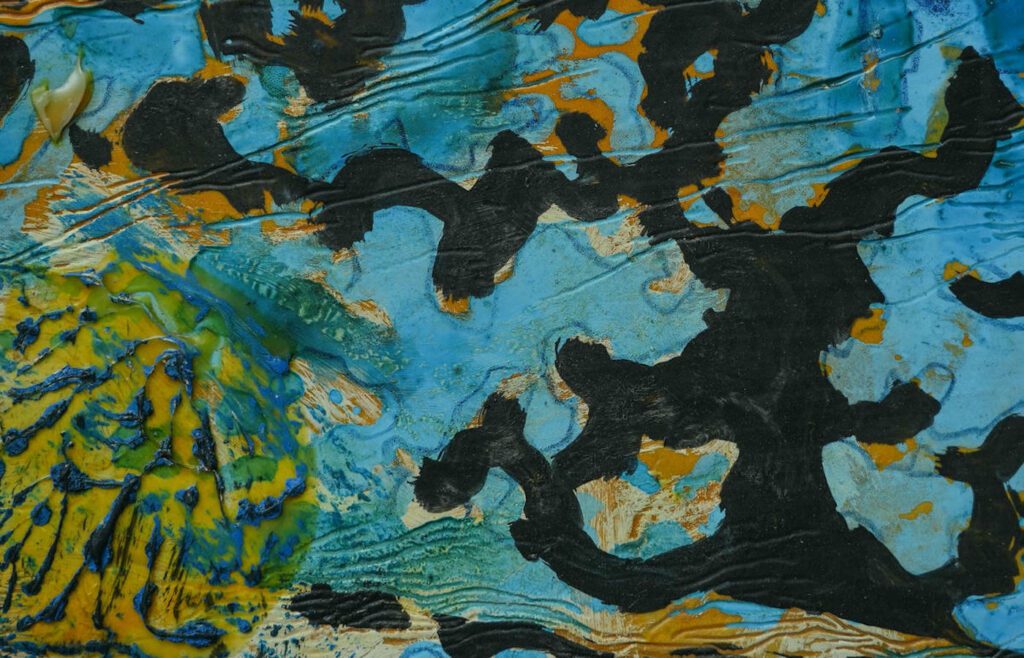Selebe Yoon, Dakar, Senegal
08 Nov 2024 - 22 Feb 2025

Arébénor Basséne, Tarana, 2024. Courtesy of Selebe Yoon
On the occasion of the 15th edition of the Dakar Biennale, Selebe Yoon is presenting Tarana, an individual exhibition by Arébénor Basséne.
Tarana could have been the name of the New World, the land on the other side of the Atlantic that has fascinated and frightened the imaginations for centuries. Pathé Diagne, a historian and linguist, theorises the existence of a permanent, centuries-old navigation between the African continent and the Americas, and proposes an alternative history of ancient civilisations, of transcontinental mobility, long before the European conquests.
Captivated by the great epics of history, triumphant and forgotten empires, it is the uncertainties of history, the multiple ways in which it is written, its stammering and contradictions that become the starting point for Arébénor Basséne’s work. He draws on both well-known stories, such as the founding of Mali in the epic of Soundiata, and counter-stories, such as that of the legendary seafaring king Aboubakri II of the Mandingo Empire and his expedition across the Atlantic. Tarana, mirages of history, between historical reality and geographical myth, is a source of great excitement for the artist.
At Selebe Yoon, Arébénor Basséne’s new series of works on batik employs techniques and materials that bear witness to world history, to the network of land and sea routes through which so much knowledge and technology has passed. Batik, an Indonesian technique introduced to the continent in the 19th century and which has become a unique craft in West Africa, allows the artist to dip his canvases in baths of wax and natural pigments, creating striking layers and intense chromatic hues. Against this abstract background, he gradually builds up a dynamic surface by using various materials such as gum arabic – the raw material that made the West African coast so attractive to foreign sailors – the ink used for Koranic tablets, henna and natural pigments from the region.
In his pictorial work, Basséne imagines himself as one of the first or last chroniclers of a world, observing the relics of reality and allowing himself the freedom to subsume and fantasise about them. In this way, he gives his canvases the appearance of parchments and mock archives, capturing landscapes with eroded textures that evoke a time that seems to have gone by. The overall effect is reminiscent of delicate cartographies in which the stories of the great transcontinental crossings and maritime voyages are interwoven. At the same time as revealing the geographer’s own ways of delineating the axes of the map, the works also show traces of valleys, river courses, objects that may have come from archaeological finds, and traces that resemble those of the first hands on land. Simultaneously, celestial constellations, reminiscent of the stars as landmarks for maritime navigation, short-circuit all attempts at scientific study. From these multiple layers of matter, immense silhouettes emerge in swirls of ochre or pink abstraction. These figures, like pilgrims or ghosts of history, momentarily disappear in the face of the enveloping abstraction, existing in a perceptible ambiguity.
Between elusive figures, disorientation, dissolution of form and content, Arébénor Basséne’s new works appear like simulacrums of narratives that might have taken place, an imaginary topology or an invitation to dream. History and its universal imposture struggle to survive in the face of the power of an intimated nature and its ineluctable movement, which would dissolve with it all the all-too-human epics.
Arébénor Basséne participates in the 15th Dakar Biennale, entitled The Wake, L’èveil, Le sillage, Xàll wi, curated by Salimata Diop, from 7 November to 7 December 2024.